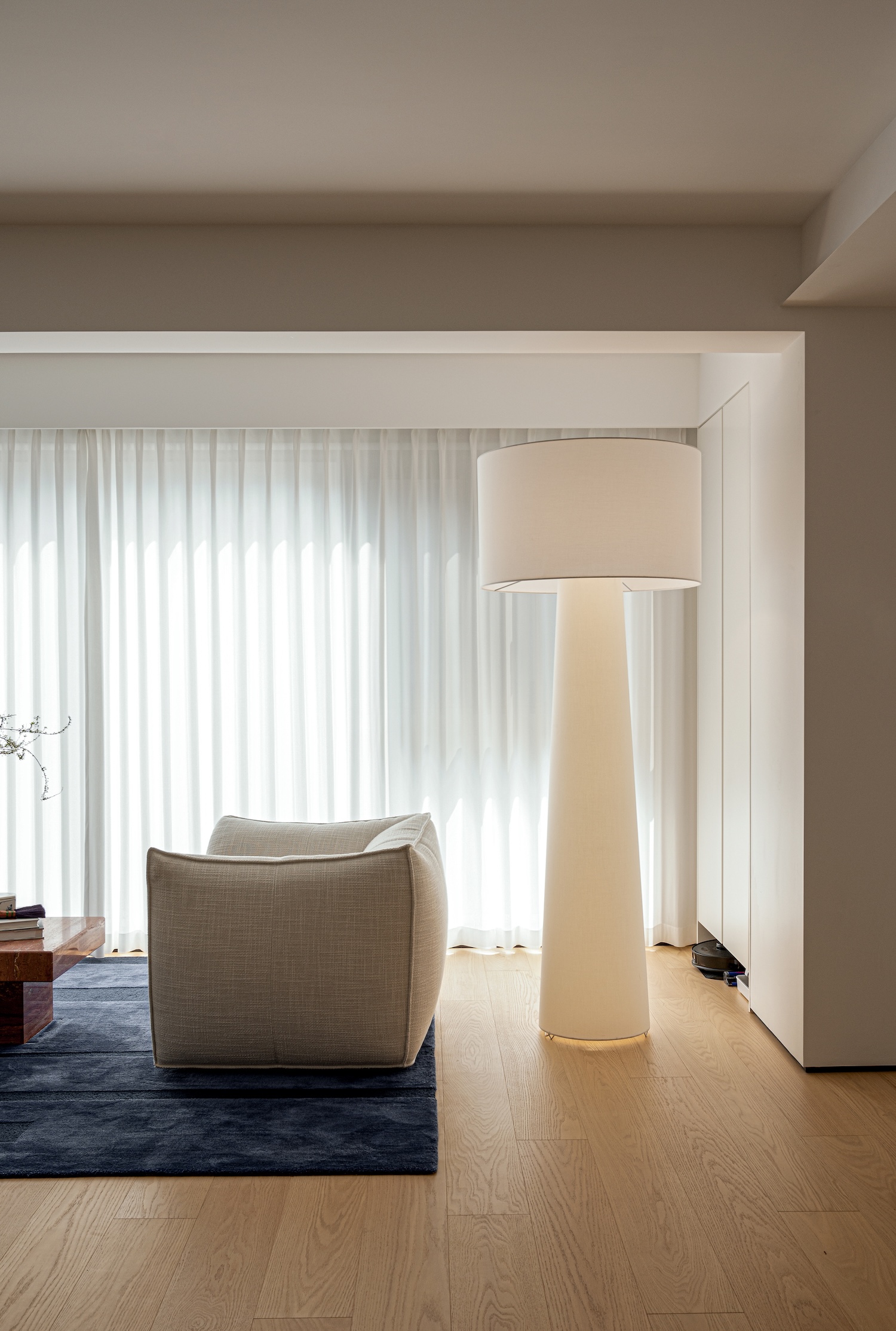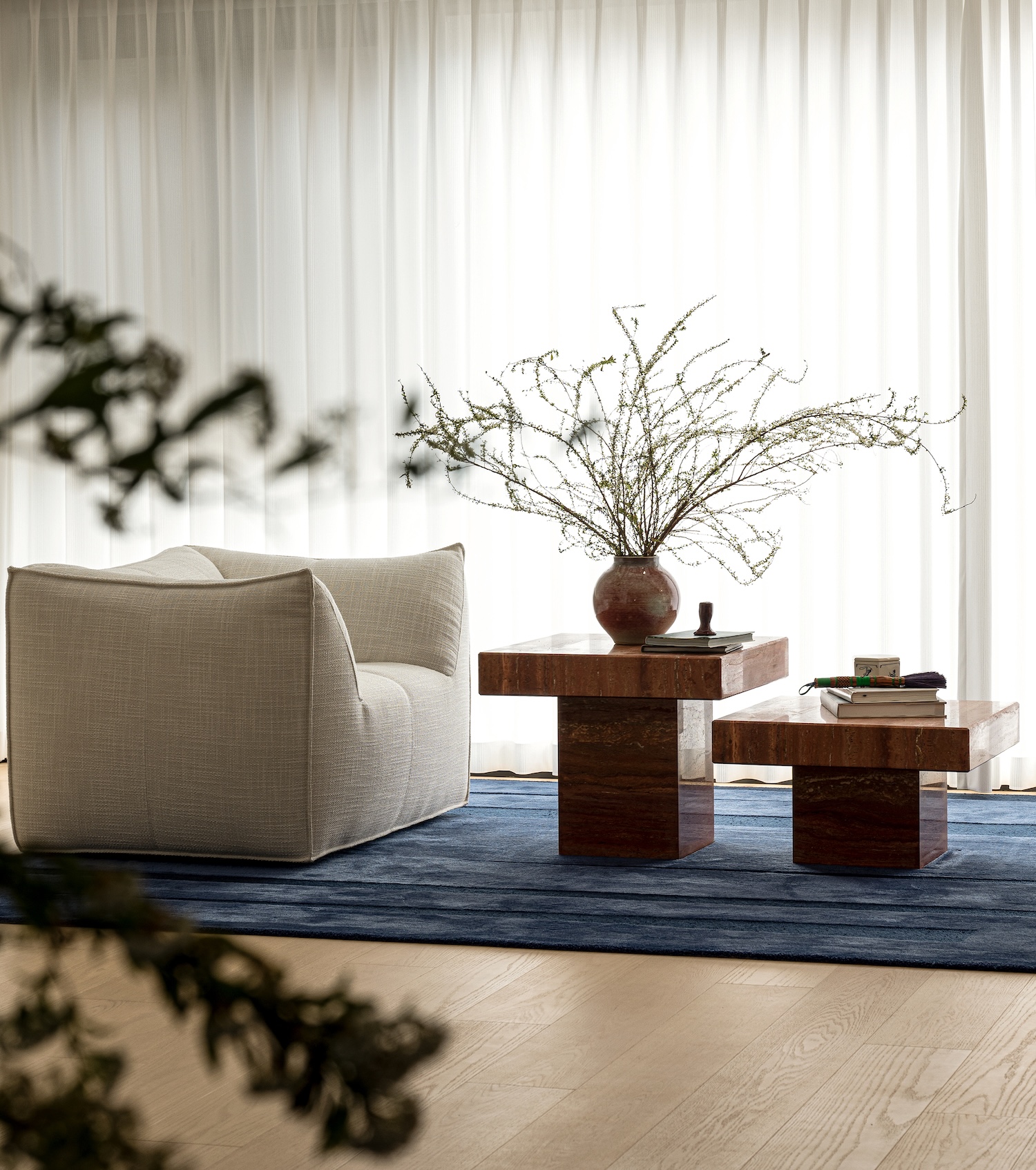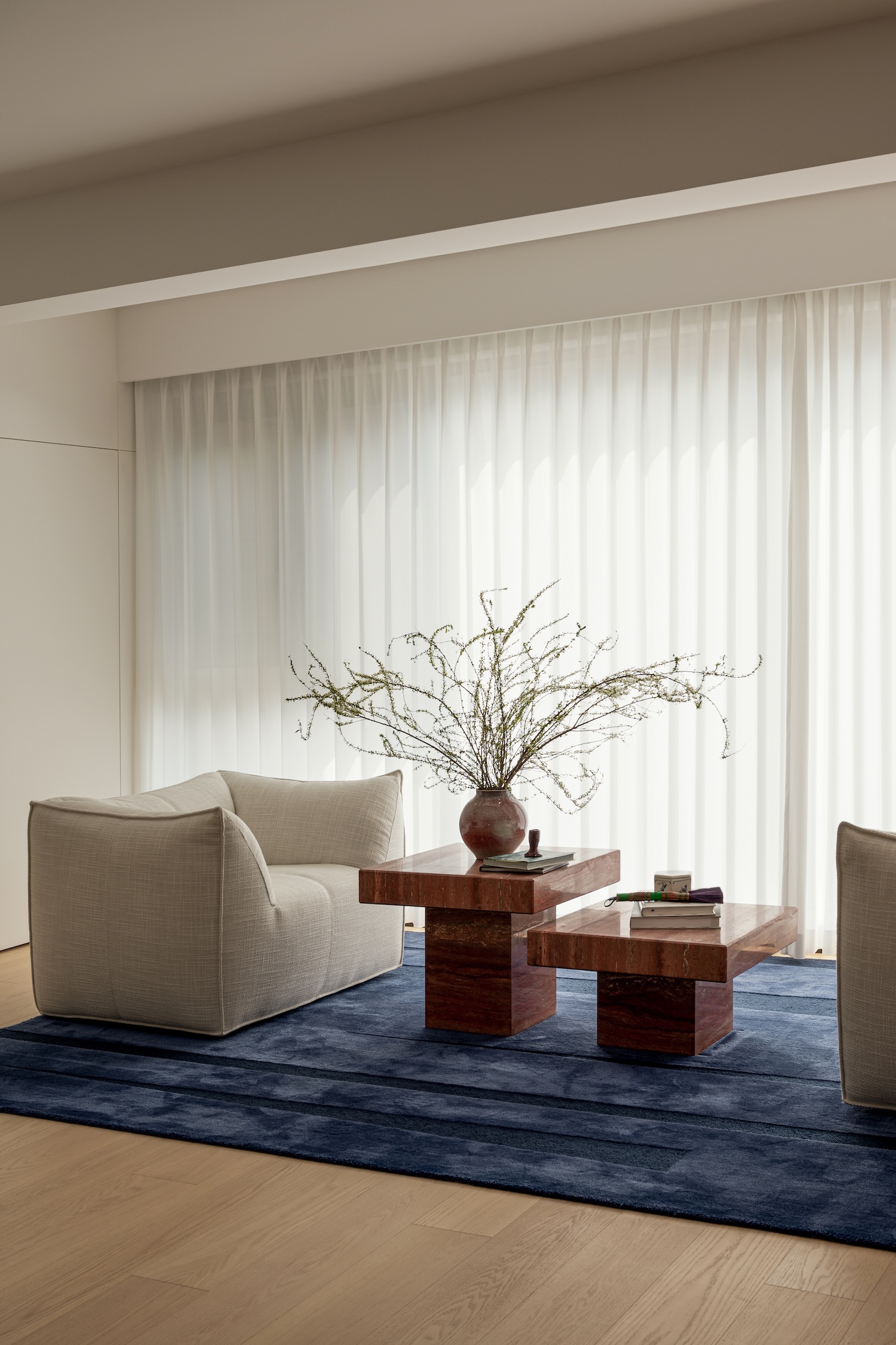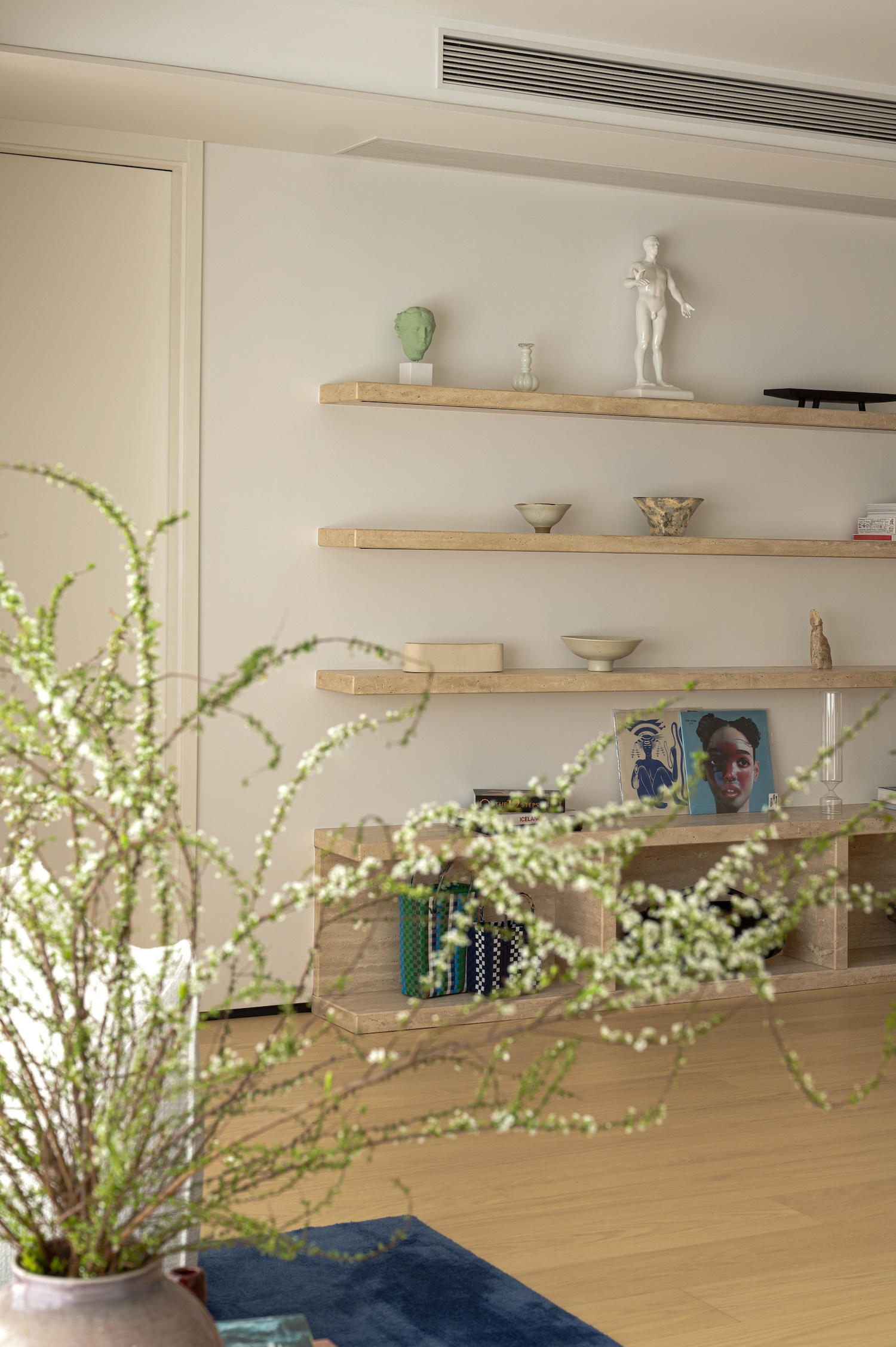Chrono-Habitat is a minimalist home located in Fuqing, China, designed by NianShang Architects. What strikes one immediately about this interior is not what has been added, but what has been meticulously removed. The designers have crafted a space that operates as a form of material poetry, where each element—from the honey-colored stone shelving to the cobalt blue carpet—functions as both practical component and sculptural presence. The white cotton-linen armchair and red stone coffee table create a compositional tension that transforms the living room from mere functional space into what the designers aptly call a “spiritual domain.”
This approach recalls the Japanese concept of ma—the meaningful void—but reinterprets it through a distinctly contemporary Chinese lens. The deliberate emptiness doesn’t represent absence but possibility. As the designers explain, “When space is stripped of all stylistic rhetoric, every blank space becomes a verse for self-expression by the inhabitant.” This philosophy positions the home not as a finished product but as an evolving canvas that gains meaning through use and time.
Historically, this work exists in fascinating dialogue with both Chinese and Western minimalist traditions. While it echoes the material honesty of mid-century modernists like Arne Jacobsen, it simultaneously draws from traditional Chinese spatial concepts where emptiness serves as active rather than passive space. The designers’ choice of stone—both the honey-toned and red varieties—connects to China’s rich tradition of material reverence while employing contemporary cutting and finishing techniques.












